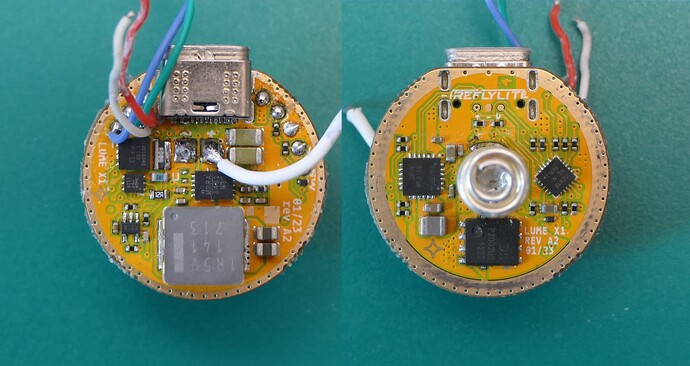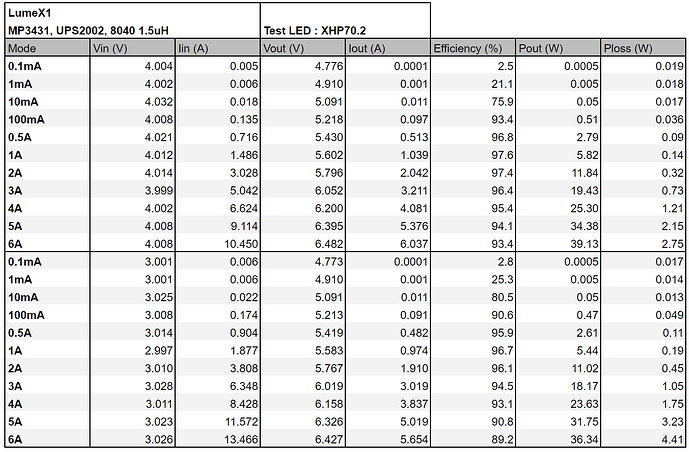Lume X1 (X1S) :
This is a Lume X1 boost driver designed by Loneoceans from a Fireflylite X1S, it uses a MP3431 boost converter with a relatively large 1.5uH inductor (~8x8x4mm).
The reverse polarity protection PFET is a Diodes Inc. DMP2002UPS, one of the best currently available.
A large dynamic range (”UDR”) is achieved with 3 sense resistors, turned on/off by a CSD16340Q3 NFET and a smaller double NFET.
The microcontroller is an Attiny1616, its DAC is used to control the output.
The charge controller is BQ25616 (unchanged from the first FFL Lume drivers).
The efficiency results are good and expected from these components. The MP3431 was chosen instead of the TPS61288 that Loneoceans used in the first LumeX1 showcase. In my experience the MP343x behaves better thermally at ~40W and higher than the TPS61288 which tends to reach thermal protection rather easily.
Here the MP3431’s Ultrasonic mode is used to prevent the switching frequency going in the audible range at the cost of lower efficiency in low modes. With the TPS61288 the ceramic capacitors can sing in the audible range and at very low output the switching frequency can go down very low, making the LED visibly flicker. So a good choice I think.
That said there are two small ranges in the ramp where the driver whines a bit, likely due to a compensation capacitor for the Op-Amp not large enough (this is a particular quirk of the MP343x), a larger comp cap may make the sense resistors transitions more visible though, so there is a compromise to be made here, ultimately once the driver is inside the light the whine is quite low.
One odd choice is the high range sense resistor FET, CSD16340Q3 has a fairly high on resistance (~5mΩ) relatively to the shunt resistor (5mΩ) and it varies non negligibly from 4.2Vin to 2.8Vin. Thus you get this output variation depending on the input voltage, nearly 0.4A lower at max output at 3Vin vs 4Vin. Due to Rdson variation between parts, the output current will vary more between drivers, and heat dependent Rdson increase makes the output drops more as the driver heats up.
There are other similarly priced FETs on the market that would have been a better choice and would have reduced these variations.

